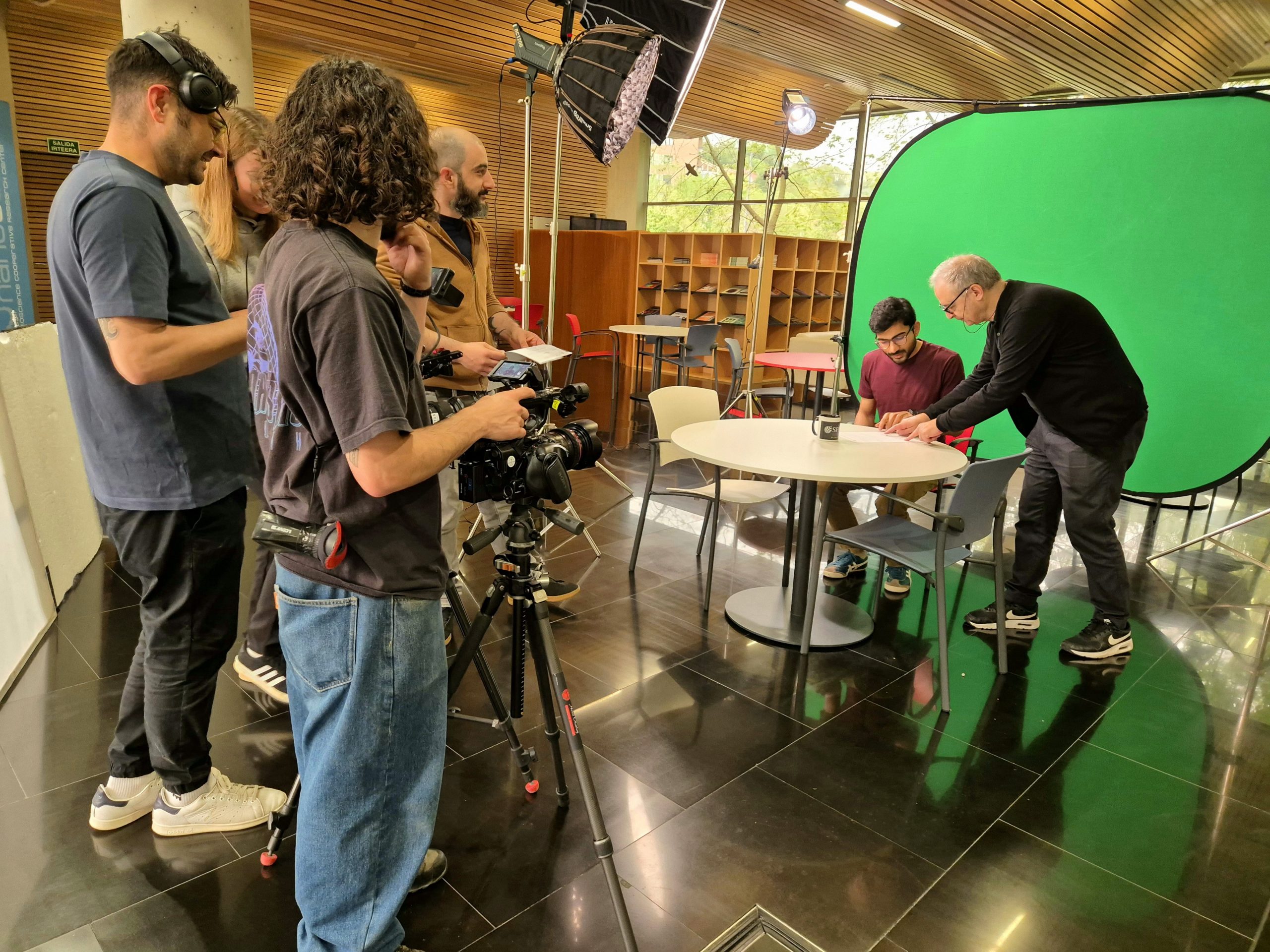Working on our SPEAR outreach video has been a thrilling and intricate adventure. I volunteered to coordinate this project, but there’s no way it would have been possible without the awesome support and guidance of our project manager, Eli. Big shout out to Eli and all our lovely ESRs!
I jumped in because I love making videos. This outreach video was the perfect way to satisfy my passion while making a meaningful contribution to our project – what better deal than this?
From scripting to finding the right video agency, and even acting in the video, I had the chance to oversee everything. Though we’re still in the post-production phase, I wanted to share a sneak peek behind the scenes, highlighting the creativity, collaboration, and coordination that went into making this video.
Scripting and Conceptualization
The first task was to develop the concept and script for the video. Our project focuses on spintronics, with ESRs working on various subtopics, some closely related and others a bit more distant. For the video, we wanted to move away from the usual “this is our project, and here’s our cool lab” format. Instead, we aimed to create something more meaningful and engaging for young viewers, sparking their interest in the field of spintronics.
The idea was to give the video a documentary-style approach, starting with the basics of electronics and its ubiquitous presence in both personal and commercial sectors. We wanted to illustrate how technology is woven into every aspect of our lives, which naturally leads to a discussion on the resulting excessive energy demands. This would smoothly transition into the need for better, faster, and more energy-efficient technology solutions—enter spintronics.
In the video, we briefly explain that spintronics leverages the spin of electrons to achieve these advancements. From there, we feature short segments where ESRs working on different subtopics within spintronics briefly describe their specific projects while connecting it to real-world applications and challenges.
Our goal was to create a narrative that not only informs but also captivates, making the viewer understand and appreciate the importance and potential of spintronics in addressing modern technological and energy challenges.


Finding the Right Video Agency
Finding the right video agency was a journey in itself. We reached out to contacts all around, from Zurich to the UK, with the initial idea of possibly shooting the video at various locations, showcasing the different labs involved in our project. However, we quickly ran into a series of challenges, from budget constraints to scheduling conflicts with the video agencies.
Additionally, coordinating the schedules of all the ESRs, each heading off to their respective secondments, made availability a major hurdle. After extensive searching and coordination, we finally found an agency in San Sebastian. Fortunately, they had some dates available just before I was set to leave for my secondment in Zurich. It felt like everything finally fell into place, allowing us to move forward with our video production plans.
Working with the Video Agency
Once we found the right video agency, the real fun began. I really liked the director from the start, and once the script was ready and he was happy with it, we dove into the details of how the video should be shot. Since we decided to film at the nanoGUNE, where I’ve been working for the past two years, I had some interesting ideas about the different scenes and locations. We shared these ideas with the director, and despite a small communication gap (my Spanish isn’t the best), he immediately understood our vision. It felt like he could read my mind! Not only did he enhance the ideas, but he also introduced some fantastic new ones.



Filming Day
Filming day was both exhilarating and exhausting, starting bright and early at 8 am and wrapping up around 7 pm. I was filled with excitement and a bit of nervousness. At times, I even forgot the smallest lines! The first scene was nerve-wracking, but as the day went on, I became more comfortable with the crew and the filming process.
Eli was always around, ensuring that every line was delivered correctly and without grammatical errors. Her presence and support were invaluable throughout the day. The whole crew was fun to work with, and the director was especially supportive.
There were some memorable moments that really stood out. In one scene, I was supposed to walk down a busy street, with the chaos of pedestrians in the background. For each take, we had to wait for the traffic light to turn green for pedestrians so that the timing and background would be just right. The shot also involved some tricky handheld camera movements and changes in focus. We faced a series of amusing challenges – sometimes I walked too fast, other times the camera lost focus, or there simply weren’t enough pedestrians crossing the street. Each of these little hiccups made the day more memorable and added a lot of laughter to the mix.
Despite the long hours, I enjoyed every moment of the shoot. The director’s guidance and the team’s camaraderie turned what could have been a stressful day into an incredibly fun and productive experience. By the end of the day, it felt like we had created something beautiful, capturing not just the essence of our project but also the enthusiasm and dedication behind it.
We’re now in the post-production phase, and the excitement continues to build. The final touches are coming together, and I can’t wait to see the finished video and share it with everyone. Stay tuned for its release!








